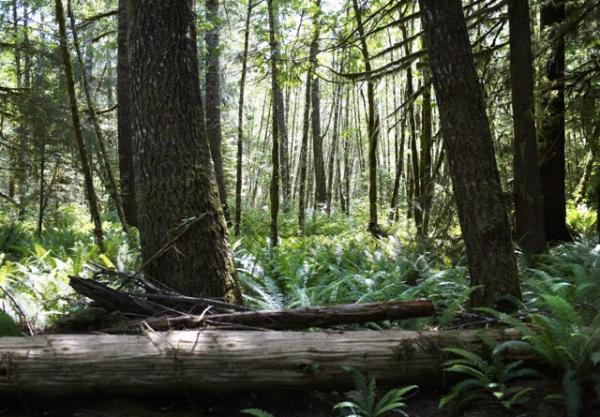Engage: Who lives at the lake?
This is a lake. What animals make their home here?
Along with many other living organisms, a squirrel, an alligator, and a heron make their home at the lake.
What do these animals need to survive?
How do they meet their needs in this environment, or habitat?
Could they survive in a different environment?
Explore: Living Organisms
Explain: How Organisms Depend on Each Other
Living organisms have basic needs. Plants need air, water, nutrients, sunlight, and space to grow. Animals need air, food, water, and shelter.
Living organisms depend on each other and on their environments, or habitats, to meet their needs for survival. We call this interdependence.
A food chain is one way to show interdependence. A food chain shows the energy transfer from one organism to another. It begins with what gets eaten and continues the flow of energy with arrows pointing to what eats it.
Elaborate: Examples of Ways Organisms Depend on Each Other
Now it’s your turn.
Find a partner.
Select two environments (e.g., garden, park, beach, lake, wooded area), and create your own food chain for each environment.
In your notebook, list the living organisms that you would find in each environment.
Use the Internet and books from your classroom or the library to learn about the environments you selected.
Compare the two environments and living organisms that live in each environment.
Give two examples of ways living organisms in each environment depend on each other and their environment.
Could a living organism from one environment survive in another environment? Why or why not?
Create a notebook entry, a poster, or a digital presentation, and be prepared to share it with the class.
Be sure to include
- what living organisms make their homes in the environment;
- how the living organisms meet their needs (what they eat, where they live);
- your evidence of interdependence within the environment; and
- why a living organism from one environment could or could not survive in another environment.
Evaluate
Test your knowledge of living and nonliving things.
To retake the quiz, reload the page and then select "No" when the "Resume Quiz" dialog box appears. For best results, use Internet Explorer as the browser when taking this quiz.
Teacher Notes
This resource is a collection of interactive activities, videos, and other digital media assembled in a conceptually scaffolded 5E lesson format. It provides alternative or additional Tier I learning options for students learning about living organisms—grade 2 TEKS (9)(A) and (C).
The assignments require student participation with self-checked and teacher-checked formative assessment opportunities. For example, after students record observations and data in their notebooks, they may be prompted to be prepared to share their answers with the class.
Check for prerequisite knowledge, differentiation needs, and student follow-up requirements (as necessary) by reviewing the resource before assigning it to or working through it with your students.
Engage
Students may have varied ideas of how each organism meets its needs in the lake environment. Accept all reasonable answers.
Students can record their responses in a notebook, or the teacher can record student responses on chart paper or in a class notebook.
Students should know that all living organisms have basic needs. Animals need air, food, water, and shelter to survive. Plants need air, water, nutrients, sunlight, and space to grow.
Explore
Read the page to students. You may choose to have a student read the pages and select the answers.
In the activity Match the Habitat, students will identify which animal lives in the habitat pictured. Record, or have a student record, the facts during the activity.
Students should understand that living organisms live in an environment, or habitat. They should begin making connections between where a living organism lives or grows and how it meets its needs.
Explain
1. Read the text to the students.
2. Follow the link to the Food Chain Challenge.
3. Select Sorter 1 to create a woodland food chain. Drag and drop the organisms to their place on the food chain.
An assessment that is aligned to the TEKS is provided in Evaluate.
Students should understand the following:
- All living things have basic needs.
- All living things depend on each other and on their environments.
- Some animals eat plants, some eat other animals, and some eat both plants and animals.
- A food chain shows the interdependence of living organisms.
- A food chain shows the energy transfer from one organism to another. It begins with what gets eaten and continues with the arrows pointing to what eats it, showing the flow of energy.
Elaborate
Students will work with a partner to select two environments, research to find evidence of energy transfer through food chains/interdependence within each environment, and create a presentation comparing the two environments and giving examples of ways the living organisms depend on each other and on their environments. One way to illustrate these dependencies is through food chains.
You will need to have research materials and/or access to the Internet for students to complete this part of the lesson.
You will find links to information that may be helpful to students in the View Related Items section at the bottom of the screen.
Evaluate
Students should follow the instructions for each question to complete the quiz.



